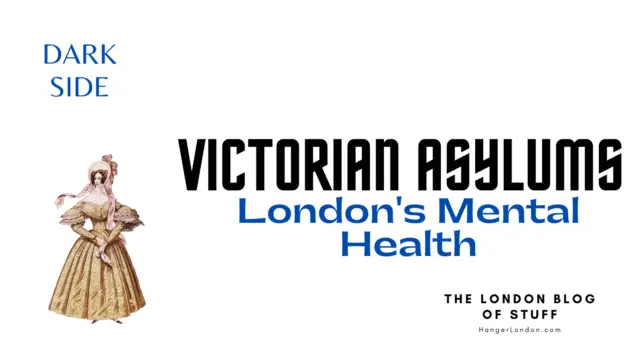London’s Victorian asylums have long been known as places of horror and despair, where the mentally ill were often subjected to inhumane treatment and neglect. Despite efforts to reform mental health care in the 19th century, many of these asylums remained places of misery and torment for their inhabitants. In this blog post, we will examine six key aspects of London’s Victorian asylums and explore why they represent some of the darkest chapters in the history of mental health care.
The Horrors at Bedlam
A Look at London’s Most Notorious Asylum Bedlam, officially known as the Bethlem Royal Hospital, is one of the oldest and most infamous mental health institutions in the world. It was initially founded as a priory for the Order of the New Order of St. Mary of Bethlehem, and it was later converted into a hospital for the mentally ill.
The original Bedlam building was located in Bishopsgate, in the City of London. However, in the 17th century, the hospital was moved to a new location in Southwark, where it remained until the 1930s.
The Bedlam Hospital was one of the largest institutions of its kind in the world. At its peak in the 18th century, it housed over 300 patients, and it was renowned for its terrible conditions and cruel treatment of its inmates. Patients were often confined in small, overcrowded cells, and many were subjected to physical abuse and neglect.
Over the centuries, it gained a reputation for being a place of horror and despair, where the mentally ill were subjected to appalling conditions and cruel treatment. Despite efforts to reform the hospital, it remained a symbol of everything that was wrong with mental health care in Victorian England.
Bethlem Royal Hospital today
The Hospital today is located in the London Borough of Bromley and is a modern psychiatric hospital that provides a wide range of specialised services for patients with mental health issues. The hospital is situated on over 200 acres of green space, providing a peaceful and tranquil environment for patients to receive care and treatment.
The hospital offers a number of specialist services, including the Anxiety Disorders Residential Unit, which provides intensive treatment for patients with severe anxiety disorders. Other services offered at Bethlem Royal Hospital include inpatient and outpatient care, day programs, and community outreach services.
Patients from across the UK come to Bethlem Royal Hospital to receive the highest quality care and treatment for their mental health needs. The hospital has a dedicated team of highly trained and experienced professionals, including psychiatrists, nurses, therapists, and support staff, who work together to provide personalised care and support for each patient.
William Hogarth’s paintings – A Young Man’s Descent into Madness and Ruin
William Hogarth was a renowned English artist who lived during the 18th century. He was known for his satirical paintings, which depicted scenes of everyday life, often with a critical and humorous edge. One of his most famous works is “The Rake’s Progress”, a series of eight paintings that tells the story of a young man’s descent into madness and ruin.
One of the paintings in the series, titled “Bedlam”, depicts the protagonist of the story, Tom Rakewell, in a room at the Bethlem Royal Hospital. In the painting, Rakewell is shown surrounded by other inmates, all of whom are depicted as being either insane or otherwise mentally disturbed.
Hogarth’s painting is a vivid depiction of the conditions that existed in the hospital at the time. The hospital, which was founded in the 13th century, had a reputation for being one of the most notorious mental institutions in England. Patients were often treated poorly, and conditions were harsh and squalid.
Hogarth’s painting is a powerful commentary on the state of mental healthcare in England at the time. It highlights the stigma and shame that was often associated with mental illness, and the lack of understanding and compassion that was shown towards those who suffered from it.
Despite the grim subject matter of his painting, Hogarth’s work is also a testament to his skill as an artist. The painting is highly detailed, with each figure and object carefully rendered. Hogarth’s use of light and shadow gives the painting a sense of depth and drama, and his use of color creates a mood of gloom and despair.
The Insanity of Poverty
In Victorian England, social class played a significant role in determining one’s likelihood of being admitted to an asylum. In general, those from the lower classes were more likely to be institutionalized than those from the upper classes.
There were several reasons for this. Firstly, mental illness was often associated with poverty and deprivation, so those who were poor and living in squalid conditions were seen as more vulnerable to developing mental health problems. Secondly, the middle and upper classes had greater access to private medical care, which meant that they were less likely to be referred to public asylum. Finally, the stigma attached to mental illness meant that many families from the middle and upper classes were reluctant to admit that they had a relative who was mentally ill and were more likely to keep them hidden from public view.
The social class of the patient also had an impact on the quality of care they received in the asylum. Patients from the lower classes were often subjected to harsher treatment than those from the upper classes. They were more likely to be confined to their rooms, restrained, and subjected to experimental treatments. They were also more likely to be subjected to the workhouse system, in which they were required to perform manual labor in order to earn their keep.
The Contrast of Money and Influence
One famous person, that can illustrate the divergence was the poet and writer Mary Lamb. Mary Lamb suffered from mental health issues and in 1796, she killed her mother during a fit of insanity. The coroner recorded the act under lunacy. Mary was interned in a mental health facility called Fisher House
Mary was released from Fisher House after six months, and moved in with Charles, she would occasionally be confined to mental facilities throughout her life. Mary and Charles continued to build a close and loving relationship, rebuilding what they had lost after their mother’s death. The Lambs formed a literary and social circle in 1801, which included minor artists and writers, and occasional visits from Charles’s friends Samuel Taylor Coleridge and William Wordsworth. During this time, Mary met two of the best female friends of her life, Sarah Stoddart and Dorothy Wordsworth.
Mary and Charles collaborated on many literary works, including Tales from Shakespeare, which they wrote for William Godwin’s Juvenile Library. Mary also wrote her own collection of tales, Mrs. Leicester’s School, and collaborated with Charles on Poems for Children. Their writing brought them financial security and solidified their place in the middle class. Mary had difficulties adjusting to middle-class life, as she was used to doing household work herself and now had to hire and govern servants. Despite her struggles with mental illness, Mary was a talented writer and contributed greatly to the literary landscape of the Romantic period.
The Shocking and not so Shocking Victorian Mental Health Therapies
The Rise of Occupational Therapy
John Ruskin, Octavia Hill, and Elizabeth Casson are important figures in the development of occupational therapy in the United Kingdom. Each played a significant role in advancing the field and shaping the way that it is practiced today.
John Ruskin, born in 1819, was an English art critic, social thinker, and philanthropist. Ruskin believed that work was essential to human life and that it was important for individuals to have access to meaningful work in order to achieve a sense of purpose and fulfillment. He saw work as a form of therapy and believed that it could be used to improve the lives of people with mental illnesses.
Octavia Hill, born in 1838, was a social reformer and one of the founders of the National Trust. She was also a pioneer in the development of social housing and believed that access to green spaces and open areas was important for the health and well-being of individuals living in crowded urban areas. Hill saw work as a way to help people escape poverty and believed that access to meaningful work was an essential part of improving the lives of those in need.
Elizabeth Casson, born in 1881, was a physician and occupational therapist who is widely regarded as one of the pioneers of occupational therapy in the United Kingdom. Casson believed that work was a fundamental aspect of human life and that it was important for individuals to have access to meaningful work in order to achieve a sense of purpose and fulfillment. She saw occupational therapy as a way to help people with disabilities or illnesses to lead full and productive lives.
Together, Ruskin, Hill, and Casson helped to establish occupational therapy as a recognized profession in the United Kingdom. Their work laid the foundation for the development of modern occupational therapy practices, and their ideas continue to influence the way that occupational therapists approach their work today.
Physical Treatments of a questionable nature
These included hydrotherapy, in which patients were immersed in water or sprayed with water at high pressure, and electroconvulsive therapy (ECT), which involved passing an electric current through the brain to induce a seizure. Other physical treatments included bloodletting, the use of leeches, and the administration of various drugs.
The Daily Life of Inmates
A Glimpse into the Grim Reality of Victorian Asylums Life for the inmates of Victorian asylums was often bleak and miserable. They were confined to small, overcrowded wards, and had little access to outdoor spaces or recreational activities. Many patients were subjected to harsh discipline and forced labor, and some were even subjected to cruel and unusual punishment.
The Legacy of Victorian Asylums
How the Treatment of Mental Illness Continues to Evolve Today Although many Victorian asylums have now been closed, their legacy lives on in modern mental health care. The treatment of the mentally ill has come a long way since the 19th century, but there is still much work to be done to ensure that patients receive the care and support they need. By studying the history of Victorian asylums, we can gain a better understanding of the challenges and opportunities that lie ahead in the field of mental health care.




